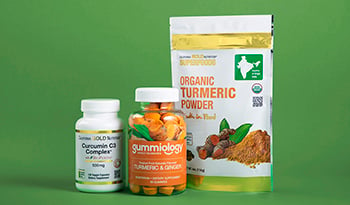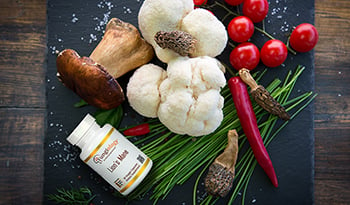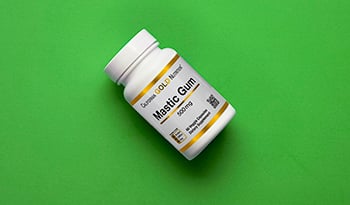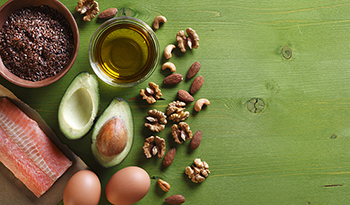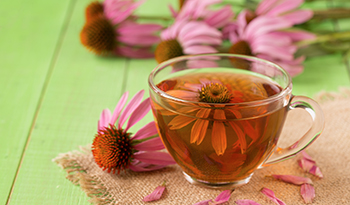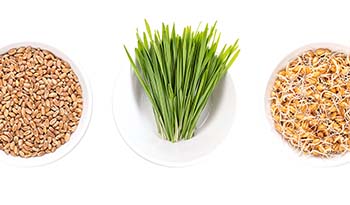Valorificați puterea de stimulare a sănătății plantelor cu polifenoli

Este posibil să nu vă dați seama, dar cu siguranță ați auzit de polifenoli înainte. Sunt prezentate în mod regulat în rapoartele de știri care acoperă cele mai recente superalimente. Motivul pentru care vinul roșu și ciocolata neagră și-au dezvoltat reputația ca fiind „bune pentru tine” este conținutul lor de polifenoli.
Dar înainte de a vă încărca pe superalimentele care fac știrile, luați ceva timp pentru a trece dincolo de titluri pentru a obține o imagine mai completă a ceea ce sunt polifenolii, unde îi găsiți și ce pot face pentru dvs.
Iată coborârea.
Ce sunt polifenolii?
Polifenolii sunt compuși naturali găsiți în alimentele vegetale, cum ar fi semințe, fructe, condimente, leguminoase și legume. Acești compuși dau plantelor culoarea lor și servesc un rol protector - apărându-le împotriva dăunătorilor, infecțiilor, substanțelor chimice toxice și radiațiilor ultraviolete. Polifenolii ajută, de asemenea, la protejarea unei plante împotriva stresului oxidativ (care este efectul produselor secundare dăunătoare create în timpul proceselor sale chimice normale).
Tipuri de polifenoli
Polifenolii sunt grupați în patru clase, pe baza structurii lor chimice.
Acizi fenolici
Acești compuși se găsesc abundent în alimentele vegetale și sunt absorbiți ușor prin pereții intestinului. Ceaiul, porumbul, cerealele, prunele, strugurii, fructele de pădure, vinul roșu, fructele kiwi, prunele, merele și cireșele conțin acizi fenolici.
Stilbenes
De obicei sintetizată de plante numai ca răspuns la infecție sau vătămare, această clasă de polifenoli nu se găsește în mod obișnuit în dieta umană. Unul dintre cei mai cunoscuți stilbeni este resveratrolul , sursele de hrană de top fiind strugurii roșii, alunele și unele fructe de pădure. Resveratrolul din struguri este conținut în principal în piele. Deoarece vinul roșu este fermentat cu coji de struguri pentru o perioadă mai lungă de timp în comparație cu albul, vinul roșu are mai mult resveratrol.
Lignani
Sursele alimentare de lignani includ fructe, cereale, alge, leguminoase, cereale și unele legume. Cea mai bogată sursă naturală de lignani este semințele de in. Poate fi dificil să obțineți o mulțime de lignani din mâncare, cu excepția cazului în care îi luați într-un supliment alimentar. Unii lignani sunt fitoestrogeni, compuși pe bază de plante care acționează ca estrogenul în organism.
Flavonoide
Flavonoidele sunt compuși vegetali care sunt responsabili pentru culorile strălucitoare ale fructelor, frunzelor, florilor și legumelor. Dintre cei 8.000 de polifenoli care au fost identificați în alimentele vegetale, 4.000 dintre ei sunt în clasa flavonoidelor.
6 Categorii de flavonoide
Deoarece există atât de multe soiuri, flavonoidele sunt împărțite în șase subclase:
- Flavonolii sunt cunoscuți pentru proprietățile lor antioxidante . Un antioxidant este un compus chimic care protejează celulele de efectele dăunătoare ale radicalilor liberi (molecule create ca produse secundare atunci când organismul descompune alimentele sau este expus la poluanți, cum ar fi radiațiile sau fumul de țigară).Găsit în mare parte în pielea fructelor și legumelor, funcția principală a flavonolilor este de a apăra plantele împotriva radiațiilor ultraviolete. Quercetina este un flavonoid comun aparținând acestei subclase. Sursele alimentare includ ceai, kale, struguri, fructe de pădure, ceapă, mere, salată și roșii.
- Flavonele acționează ca pesticide naturale, protejând frunzele de insectele dăunătoare. Se crede că acești compuși joacă un rol în relaxarea vaselor de sânge constrânse. Sursele dietetice includ vin roșu, piei de fructe (inclusiv roșii), hrișcă și ardei roșu.
- Flavanonele au proprietăți antiinflamatorii. Se găsesc în alimentele citrice, cum ar fi lime, lămâi, portocale și grapefruit.
- Flavanolii (care nu trebuie confundați cu flavonolii) sunt denumiți în mod obișnuit catechine. Sursele alimentare includ cacao, struguri, litchi, ceai negru, ceai verdeși căpșuni.
- Antocianinele dau culoare plantelor roșii, albastre și violet. Se găsesc în principal în pielea fructelor de pădure (afine, afine, căpșuni, mure), struguri roșii sau violet și vin roșu.
- Izoflavonele pot ajuta la menținerea nivelului de estrogen echilibrat în corpul dumneavoastră. Similar cu estrogenul în compoziția chimică, nu numai că izoflavonele pot crește nivelurile scăzute de estrogen, dar pot bloca și dezvoltarea unor niveluri ridicate. Sursa alimentară principală este leguminoasele precum soia, arahide, năut și fasole fava.
Beneficiile pentru sănătate ale polifenolilor
Consumul de polifenoli pare să declanșeze un răspuns în organism care creează o anumită cantitate de rezistență la stres și protecție celulară. Compușii polifenoli realizează acest lucru cu proprietățile lor antioxidante și antiinflamatorii. Deci, în timp ce plantele folosesc polifenoli pentru a-și apăra și păstra sănătatea, puteți consuma aceiași compuși în propriul avantaj pentru sănătate. Iată câteva dintre beneficiile potențiale pentru sănătate ale polifenolilor.
1. Ajută la reglarea zahărului din sânge
Polifenolii precum quercetina, resveratrolulși acidul ferulic pot afecta zahărul din sânge în diferite moduri, care includ blocarea absorbției glucozei (zahărului) în intestin sau absorbția acesteia în altă parte a corpului.
- S-a descoperit că polifenolii din ceapă, în special quercetina, prezintă un puternic efect antidiabetic.
- Acidul ferulic, un polifenol găsit abundent în legume și tărâțe de porumb, s-a demonstrat că îmbunătățește absorbția glucozei și poate spori răspunsul la medicamentele antidiabetice.
- Lipsa insulinei eficiente joacă un rol cheie în dezvoltarea diabetului, iar resveratrolul poate scădea secreția de insulină și poate întârzia apariția rezistenței la insulină. Cercetările privind resveratrolul dezvăluie, de asemenea, potențialul său de a inhiba modificările diabetice în rinichi (o afecțiune numită nefropatie diabetică).
2. Sănătoasă pentru inimă
O dietă bogată în polifenoli poate ajuta la protejarea inimii. Polifenolii ajută la apărarea moleculelor de colesterol împotriva daunelor cauzate de radicalii liberi. Prin inhibarea acestei leziuni, polifenolii pot preveni ateroscleroza (starea în care plăcile se acumulează în arterele tale). Reducerea inflamației și acțiunea împotriva trombocitelor (celule care se pot lipi împreună pentru a forma un cheag de sânge) sunt câteva alte modalități prin care polifenolii vă pot ajuta să vă stimulați sănătatea cardiovasculară.
- Cercetările asupra quercetinei arată că poate inhiba ruperea plăcilor aterosclerotice care precede formarea cheagurilor de sânge.
- S-a demonstrat că catechinele din ceai rezistă modificărilor celulelor din pereții arterelor, contribuind posibil la încetinirea formării unei plăci.
- Studiile privind catechinele din ciocolata neagra au demonstrat ca acesti polifenoli pot ajuta la cresterea nivelului de HDL (colesterolul „bun”).
- Cercetările arată că consumul de resveratrol în vin roșu sau suc de struguri poate împiedica trombocitele să se adune împreună pentru a crea un cheag de sânge. Constricția arterei coronare, provocând apariția unui blocaj, poate fi, de asemenea, prevenită prin consumul de vin roșu sau suc de struguri.
3. Proprietăți antioxidante și antiinflamatorii
Cercetările au arătat că polifenolii, în special resveratrolul , pot avea efecte anti-cancerigene datorită proprietăților lor antioxidante . Resveratrolul poate ajuta, de asemenea, la combaterea inflamației.
4. Îmbunătățiți sănătatea creierului
Polifenolii pot oferi acțiune protectoare asupra creierului datorită capacității lor de a traversa bariera hematoencefalică care controlează intrarea substanțelor în creier.
- Cercetările au arătat că polifenolii pot juca un rol semnificativ în întârzierea apariției bolii Alzheimer.
- Studiile arată că acidul ferulic din tărâțele de porumb poate fi benefic în boala Alzheimer datorită proprietăților sale antioxidante și antiinflamatorii.
- S-a demonstrat că catechinele au un rol terapeutic în tratamentul bolii Parkinson datorită activității antioxidante.
5. Promovați sănătatea oaselor
Cercetările continuă să arate că polifenolii pot ajuta la încetinirea scăderii densității minerale osoase care duce la osteoporoză. Un studiu asupra genisteinei și daidzeinei a sugerat că suplimentarea cu aceste izoflavone, care se găsesc abundent în leguminoase, poate contribui la prevenirea pierderii osoase.
Consumul unei game largi de polifenoli în dieta ta - fie sub formă de alimente sau supliment, fie o combinație a ambelor - este o modalitate excelentă de a vă stimula sănătatea generală și de a reduce riscul de a dezvolta anumite afecțiuni de sănătate.
Declarație de declinare a responsabilității:Acest blog nu are ca scop să ofere un diagnostic.













































































 Cuprins
Cuprins



